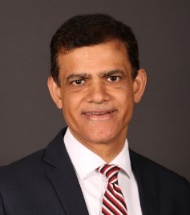Mumbai, 30 May 2024: Land-scarce MMR has few ways to go but up, and unsurprisingly has the country’s maximum skyscrapers. The region that pioneered steep vertical growth in India keeps reaching for the skies – latest ANAROCK data indicates that MMR will see 34% growth in skyscrapers with over 40 floors over the next six years (2024 to 2030).
While other cities have lately shown a trend reversal, especially post-COVID-19, MMR’s affinity for skyscrapers shows no signs of slowing down.
The region currently has 361 high-rise towers of over 40 floors each. Of these, 154 have already been completed and over 207 are scheduled to be completed between 2024 and 2030.
| No. of High-Rise Towers in MMR Over the Years | ||||
| Completion-wise | <20th floor | 20th – 40th floor | >40th floor | Total |
| Till 2023 | 12,126 | 1,487 | 154 | 13,767 |
| B/w 2024 – 2030 | 8,096 | 1,846 | 207 | 10,149 |

Anuj Puri, Chairman – ANAROCK Group, says, “Skyscrapers are synonymous with Mumbai’s real estate landscape, and increasingly define it. Apart from its extreme shortage of developable land, the city’s towering urban aesthetic has become an apt symbol of its economic might. Between 2019 and 2023, 154 high-rises with 40+ floors hit the MMR market; between 2024 and 2030, 207 more will be completed. These projects have already been launched across the region.”
Exponential population growth coupled with increased FSI limits over the last decade are among the main factors giving ‘rise’ to the number of skyscrapers in the region. Also, in 2019, the state government gave Mumbai’s beleaguered real estate market a major shot in the arm by reducing the FSI premium for all residential and commercial projects in the city for two years.
“Developers obviously welcomed this decision, as it reduced a significant input cost – the floor space premium – by up to 25% for residential buildings,” says Puri. “The decreased overall construction cost, coupled with high demand, prompted developers to launch more high-rises.”
The development of high-rises also helps decongest the city. Skyscrapers include amenities and residences in a single vertical space, thereby reducing residents’ need to leave the premises for leisure pursuits. Apart from thereby easing traffic congestion, these buildings also tend to trigger significant infrastructure developments around them, including better roads and improved public transport facilities.
Zone-wise Classification of High-rise Towers
There are currently a total of 361 towers with over 40 floors in the entire MMR region, either already completed or slated for completion by 2030. Of these, areas in South Central Mumbai boast of the maximum number – about 103 towers, or a 29% overall share. Of these, at least 61 towers are completed and another 42 will be completed within the 2024-2030 period.
- Mumbai’s Central suburbs rank next with 87 high-rises of >40 floors – 42 are completed and another 45 towers are under construction.
- The city’s Western suburbs have at least 80 high rises, with 50 towers complete and 30 towers scheduled for completion in the next six years.
- Thane has at least 61 high-rises, of which just 2 towers are completed and the remaining 59 under development. This clearly indicates that Thane has only recently adopted the high-rise trend from its neighbouring Mumbai.
- Navi Mumbai follows with a total of 25 high-rise towers of 40+ floors – 10 are complete and 15 in various stages of construction.
- The peripheral central and western suburbs have limited high-rise towers – 5 towers in total, all completed.
- Micro-markets like Byculla, Worli, Lower Parel, Prabhadevi, Mahalakshmi, Marine Line, Mulund, Chembur, Kanjurmarg, Santacruz, Malad, Goregaon, and Thane city are the definitive skyscraper hotspots.
Currently, there are around 61 high-rises in MMR that have more than 60 floors each. Here again, the South-Central Mumbai localities have the lion’s share with 28 towers.
“The tallest towers in the Mumbai Metropolitan Region are not just architectural marvels,” adds Puri. “They are also emblematic of a city always on the move. And of course, skyscrapers are really Maximum City’s only logical response for the need to balance growth with sustainability.”

